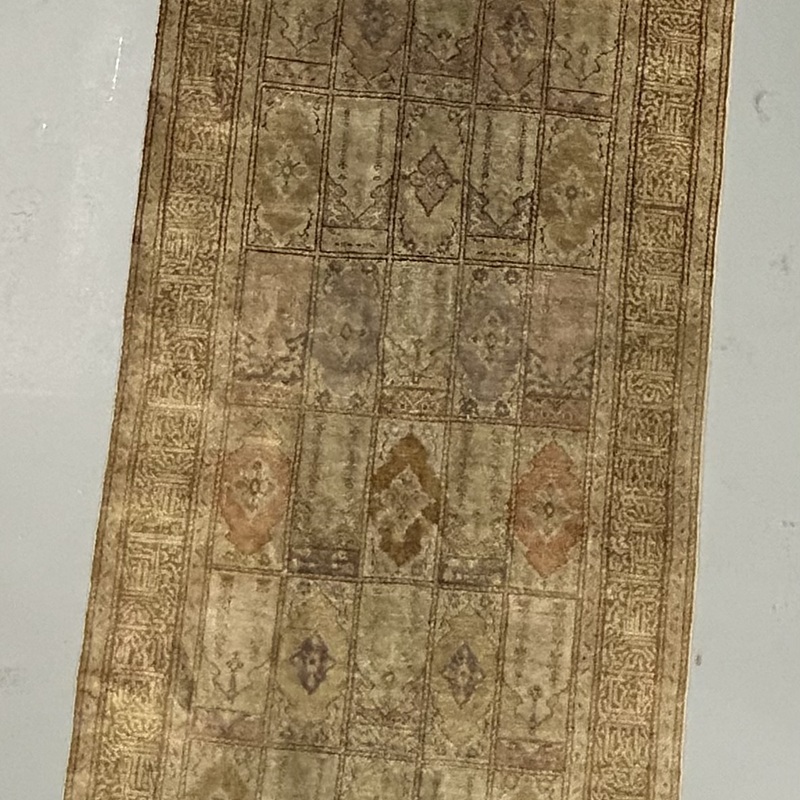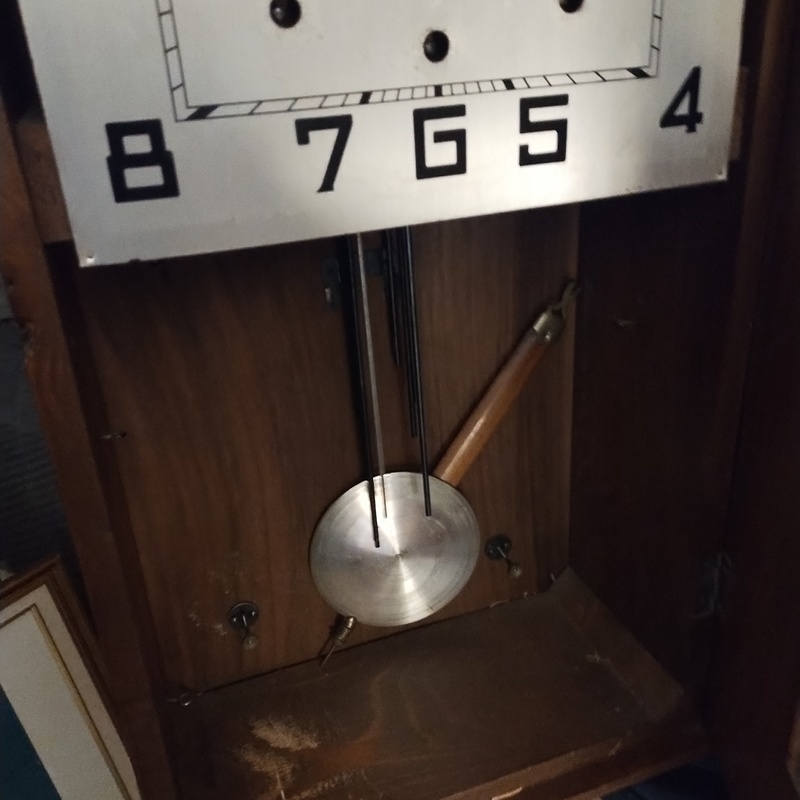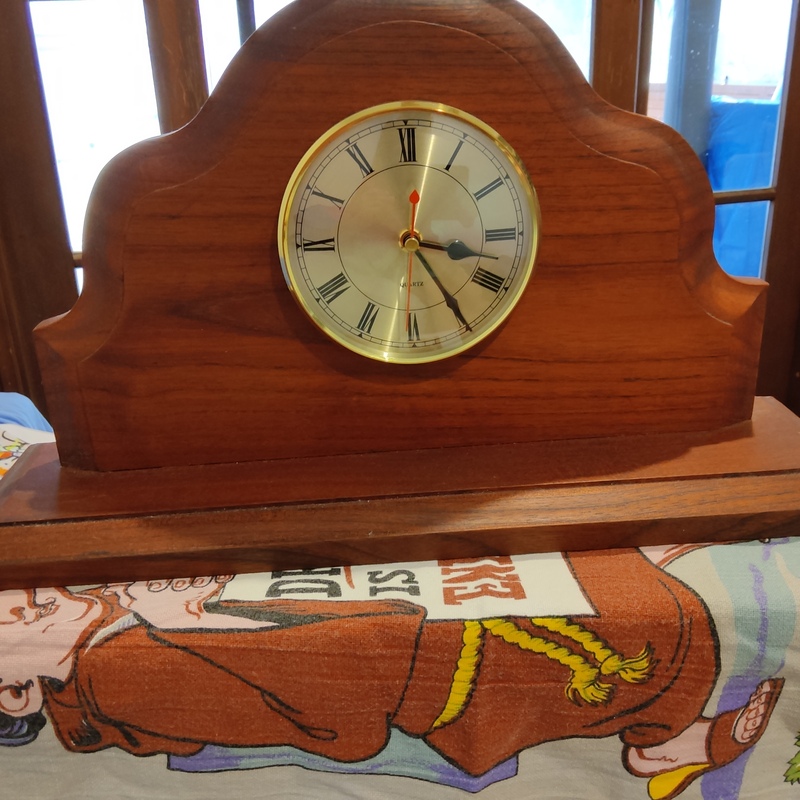Antique Copper and Metal Coffee Pot, "Dallah Style"
This coffee pot came from an antique store near Sakhara in Egypt in 1984 or 1985. I found it at a small shop there. It is 9 inches tall and about 5 inches wide at the base. Part of it appears to be copper -- the spout and the top. The body is not so recognizable to me, but it has an attractive etched pattern. There is also a signature of sorts on the bottom with two crossed swords and a fair amount of writing in Arabic I assume. It could probably clean up well with metal cleaner, but I am always wary of disturbing natural patinas that come with age. I found one somewhat similar on a site I frequent. https://www.1stdibs.com/furniture/asian-art-furniture/metalwork/19th-century-middle-eastern-dallah-arabic-coffee-pot/id-f_20499872/?utm_content=condensed&gclid=Cj0KCQjwub-HBhCyARIsAPctr7ymjW-AcbTSXQj6loUf1E56QQaJYK2odmpdq5gCdN5pgttbxVRnS28aAoy-EALw_wcB&gclsrc=aw.ds
Purchased from a local shop outside Cairo/unknown
Other
Maybe

Hi Rhonda,
Thank you for contacting Mearto with your appraisal inquiry.
Are you OK with my reaching out to a friend who reads Arabic for a translation? It may take a little longer than 48 hours for this appraisal if I do.
Thanks to confirm,
Delia
Hi Rhonda,
My friend has gotten back to me. Here are his comments:
The most prominent word (well, one of them)—at the bottom right is musajjile (meaning “registrar or notary public” [feminine!]). In the center, slightly larger letters, is the word wahid (“someone; or the number one”. The word at the upper right is hard for me to read—very dark. The other lettering, going clockwise around from the bottom to about “11 o’clock” (on a clock face)—Arabic script is read from right to left—is pretty much meaningless to me. I could suggest “Ali” (man’s name) for the letters around the 10-11 position. The “9” doesn’t seem to relate to anything. The crossed swords? Intriguing—but meaning?? The outermost stuff (with the “10”) on the lower left side—??
My immediate guess was some sort of “seal”—reinforced by that word “notary”.
(Delia again): A couple of thoughts and a couple of questions for you. We frequently see works that were made in the late 19th century - when there was a large trend for "Orientalist" antiques among tourists / Grand Tour travelers and for the export market - for marks to be somewhat nonsensical - they lend some false authenticity to a piece that a non-speaker or reader of Arabic would not be able to know the difference. It happened a lot in China and Japan, with goods made for the export market. Use of achronistic characters on porcelains, that sort of thing. That could be one explanation / interpretation of the inscription.
A SECOND interpretation would be that this is in an unfamiliar Middle/Near Eastern / North African dialect and that the inscription is correct, and represents something like an assayers mark to guarantee the quality.
Does the quality in person seem good?
Is the decoration raised or inset into the body of the pot? I'm trying to see if this is done with the damascene technique or niello....or something else.
Thoughts? This is such an unusual thing I want to make sure we get the appraisal right.
Hello Delia:
Thank you for your interest and diligence! I appreciate it.
I think I recognize craftmanship in this piece to answer one of your questions. The etching is not raised. If you close your eyes and run your fingers over the design, it feels smooth. So, it is recessed rather than raised. The design is a little complex with three bands of a "metal ribon" design at the upper portion the top tier and at the bottom of the pot. You can see the bands that encircle the pot in three places, but you cannot feel them protruding or any rough edges. And there are floral, and maybe berries and a really beautiful plant or flower motif on the main body of the pot. All recessed. You can see it, but you cannot feel it.
I have some old Ottoman Empire metal pieces that I collected in Istanbul, including an old coffee pot. In comparison, this piece is superior in construction with tighter joints. The copper lid is heavy and drops down snuggly when the lid is closed. The "finial" at the top of the pot is stationery and tight. No wobbling. The handle is firmly in place attached to the body in two places. It is clear that the spout and the top are made of copper, but there are two other metals in this piece. For such a compact item at nine inches, it is relatively heavy, and particularly compared to my Ottoman coffee pot which is made of tin. This is not tin. Too heavy.
I am not into disturbing pieces, but this weekend I am going to lightly clean the bottom of the pot, maybe with metal cleaner or silver polish to see if it makes a clearer image.
Thank you!
Sounds good thanks!










Hello:
I would appreciaye that. Please consult with your friend. No hurry.